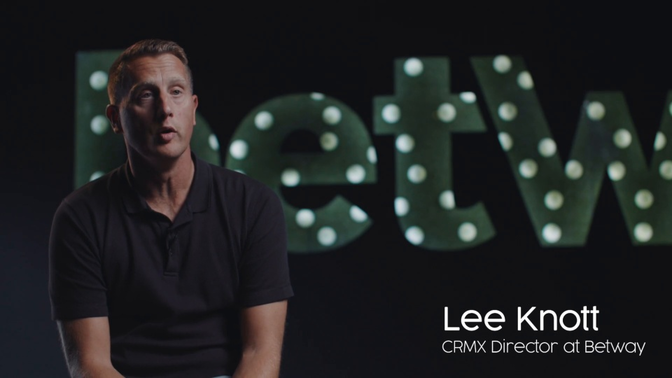
4 questions to ask when your drop-off rates get worrying

So, you’ve done the A/B testing. You’ve adjusted button colors, tweaked page layouts, and combed through analytics dashboards. But even with all that effort, conversion rates remain flat, and drop-off rates still spike in places you didn’t expect.
This kind of plateau can feel frustrating. The problem is this: traditional analytics only show what users did. They don’t tell you why.
Here’s how you solve the mystery. By layering in real-time user insights—what people thought, felt, or expected—you can break through those conversion barriers and start optimizing based on human behavior, not just numbers.
Let’s dive into four simple, practical questions that’ll help you figure out what’s really going on behind those stubborn drop-offs.
1. What are people expecting to see, but aren’t?
When visitors land on your page and quickly bounce, it raises a crucial question: what were they expecting to find—and why didn’t they see it? Your page might look great, but if it doesn’t match the user's mental model, that disconnect can kill conversions.
It’s about expectation vs. experience. Though it is important for all your site pages to follow best practices, have strong branding, and tick every UI checklist, it's just as important (if not more), to make sure the contents of your page align with what your customer expects to see.
Site visitors tend to bounce within seconds if their expectations aren’t met immediately. When that expectation vs. experience gap widens, attention drops fast, and so does your conversion rate.
Betway Group is a global online gambling company. App downloads in a couple markets were below expectations and the company set out to learn why. By talking with customers, they discovered friction points on landing pages were preventing people from downloading the app.
As a result, after launching new landing pages, Betway increased the number of customers downloading the app by 600% across two targeted regions, while increasing the total proportion of customers receiving push notifications by 25%.

What to do:
Use first-impression usability testing to capture user expectations before they click or scroll. Ask participants what they think your site offers, what they would do next, or what they find confusing.
Pair this with heatmaps and think-aloud sessions. Heatmaps can show which sections are ignored and think-aloud tests can unpack the mental disconnect behind their choices.
2. Is your site’s navigation leading users astray?
Imagine a customer visiting a bank’s website to apply for a loan but is struggling to find the "Apply now" button that's buried under an unrelated menu like “Resources.” That misplaced navigation always leads to frustration. Users want to get to where they need to be on the very first try. But poor navigation creates friction points. Studies show that 69% of users abandon checkout due to reasons that include complicated checkout processes.
Even the cleanest-looking nav bars can be misleading if it doesn't meet user expectations. If users get lost while navigating your site or give up halfway because they can't find what they need, then that’s a sign your navigation flow isn’t aligned with how users mentally categorize content.
In a multi-page site, this friction often reveals itself in several key user behaviors:
- Relying heavily on the search function to locate information
- Navigating back and forth between pages repeatedly
- Clicking on incorrect elements out of frustration
- Abandoning the journey altogether at critical decision points.
These patterns point to possible usability issues like site architecture and labeling.
HP Inc.'s web team observed the website was not converting visitors as well as it should, and customer satisfaction metrics reflected a less-than-ideal experience. However, redesigning one of the world's most visible websites is easier said than done.
HP benchmarked its customer experience using moderated and unmoderated studies on the UserTesting Human Insight Platform and combined those findings with other data sources for a holistic perspective. Their goal was to deeply understand and empathize with both B2B and B2C customers to create solutions that were more intuitive, effective, and enjoyable to use.
Watching highlight videos from the UserTesting research let the broader organization, including executives, feel like they got to 'experience what their customers experienced.'
“Not only did these human insights help us close our empathy gap internally, but the speed in which we were able to collect, analyze, and act on them allows us to build on our momentum,” said Anmeen Leong, Product Manager, Digital Experimentation.
Within five months, changing the navigation layout on HP.com resulted in a 3% increase in site conversions, a 7% increase in revenue per visit, and a remarkable 61% increase in customer satisfaction with their website experience.
What to do:
Run tree tests to see if users can successfully navigate your structure without the visuals. This reveals whether your information hierarchy makes intuitive sense.
Follow up with card sorting exercises to better understand how real users mentally group your content. Their mental model might be very different from your internal team’s.
And don’t ignore user interviews and session recordings—watch where users hesitate, hover, or scroll repeatedly without taking action. That’s usually a cue that something’s off.
Guide
Boost website conversions with real user feedback
3. Are your CTAs clear and timely?
CTAs are the final push toward conversion. But if they’re vague, mismatched, or poorly placed, they can actually become blockers. The right CTA at the wrong time (or with the wrong message) won’t move your users forward.
This becomes even more important in today’s digital market, where competition is fierce and attention spans are short. According to a study by WiserNotify, a clear CTA can increase conversion rates by 161%.
That’s why calls to action are one of the most overlooked reasons for drop-offs. Think about it: if a user reads your copy and is almost ready to act—but the CTA says “Submit” instead of “Get my custom quote”—you lose a conversion. That final nudge has to align with what the user needs at that exact moment.
What to do:
Conduct preference tests to explore different CTA variations with real users. Ask them what each option means to them, or which one they’d be most likely to click.
Then, review session recordings to spot where users pause or move away right before clicking. It often means the CTA was too aggressive, unclear, or not persuasive enough.
Don't forget to test placement and surrounding context. A good CTA isn’t just well-written—it’s well-timed.
4. What hidden insights are you missing from real user feedback?
You may know where people drop off, but without talking to users or hearing their thought processes, you’ll never fully understand why. Numbers can’t capture hesitation, confusion, or unmet expectations. That’s where qualitative insights become invaluable.
Qualitative feedback is especially powerful when you’re dealing with complex or emotional user journeys. Take the healthcare or finance industry, for instance, where trust is crucial; even small moments of confusion can cause users to abandon a form out of fear or doubt.
Without hearing directly from users, you won’t know whether they left because of a confusing instruction, a missing reassurance message, or simply feeling overwhelmed.
When this happens, it’s almost always due to a micro-moment of friction. And you’ll miss that moment if you’re only looking at numbers.
Helix partners with health systems to offer community health research programs that screen participants’ DNA for their risk of developing Tier 1 actionable genetic conditions. The company, a 2024 illumi award winner, leveraged human insights to better understand patient concerns about signing up for screening.
Helix’s UX team utilized a mixed-methods approach to gather insights about the preferences and behaviors of potential participants. They used Figma prototypes to test program invitations. They reviewed text, link and button placement, and calls to action on landing pages. They also ran attitudinal surveys which gathered quantitative insights.

The insights were illuminating and they helped to shape important changes to Helix’s enrollment programs on its website. The result was a 6.2x increase in discoverability of its “no cost” messaging, which resulted in a 2x increase in its click-thru rate.
What to do:
Use usability tests focused on the exact step where drop-offs occur. Have users verbalize what’s unclear, what made them hesitate, or what they expected to happen next.
Layer in session replays and targeted post-task questions to get context. Ask things like:
- “What were you looking for at this point?”
- “What would have helped you complete this step?”
- “What was the most frustrating part of this process?”
These insights are extremely valuable—because once you understand the why, you can confidently fix the how.
5. Summary: from drop-offs to growth
When drop-off rates spike, and you’ve run out of “best practices” to try, it’s time to get personal. Traditional analytics will always be useful, but alone, they’re not enough.
To really fix conversion issues, you need to understand your users on a human level. That’s where real user feedback comes in. Think moderated and unmoderated tests, video feedback, and live intercept testing. These are your tools to turn frustrations into actionable insights—so you can start converting with confidence.
On-Demand Webinar







